calsfoundation@cals.org
Command-Aire
In 1926, the Arkansas Aircraft Company was founded in Little Rock (Pulaski County) to build small personal airplanes. The company represented the first and one of the few aircraft companies that have existed in Arkansas. The Arkansas Aircraft Company, which later became known as Command-Aire, was nationally known for its aircraft, and it was one of the country’s leading airplane manufacturers in the late 1920s.
Robert B. Snowden Jr. was the company’s president, and John Carroll Cone was in charge of sales. Albert Voellmecke—a graduate of the University of Braunschweigaud in Germany and an employee of the Heinkel firm, a noted German aircraft builder—was sent to America by the Heinkel firm in 1927 to advise the company. He later became the company’s chief designer.
The new company occupied the former Climber Motor Car Factory at 1823 East 17th Street in Little Rock, which was the perfect facility for its needs. The building’s large, open interior space was ideal for airplane construction. Additionally, the large amount of land (more than twenty acres) allowed the company to construct runways for its planes. The runways became known as Command-Aire Field. The company had two runways at the facility: a 1,800-foot-long, 150-foot-wide runway running north-south between 17th and 21st streets and a 1,600-foot-long, 150-foot-wide runway running northwest-southeast located south of the factory.
The company initially manufactured a version of the German Heinkel HD-40. After improving the design, however, the company reorganized and changed its name to Command-Aire around the year 1928. The planes were targeted at trainers and private owners, and the Command-Aire Corporation was one of the nation’s leading aircraft manufacturers. The 3C3 had a range of 440 miles, a cruising speed of eighty-five miles per hour, and a price of $3,350. The 5C3 had a range of 500 miles, a cruising speed of 123 mph, and a price of $6,325. A typical Command-Aire plane featured a fuselage and tail of welded steel tubing, wood-frame wings, fabric covering, and rubber cord shock absorbers. To keep costs low, early models did not have brakes or tail wheels. Command-Aire sold more than 300 planes before the Depression hurt its sales. The company was never able to recover and closed by early 1931. Today, the factory remains at 1823 East 17th Street in Little Rock and is still used as an industrial facility, although the runways no longer exist.
Although the company remained in business only from 1926 until 1931, the planes built by the company were well known, especially after the All-America Flying Derby. The 5,541-mile race, which began on July 21, 1930, in Detroit and ended eleven days later, featured overnight control stops in Buffalo, New York; New York City; Cincinnati, Ohio; Little Rock; Houston, Texas; San Angelo, Texas; Douglas, Arizona; Los Angeles, California; Ogden, Utah; Lincoln, Nebraska; and Chicago, Illinois, before returning to Detroit. The race’s purpose was to demonstrate the feasibility of long-distance flight by light airplanes. Lee Gehlbach, piloting a specially built Command-Aire plane named the “Little Rocket,” which flew at an average speed of 127.11 mph, won the race. His prize was $15,000, a tremendous amount of money during the Depression. Command-Aire planes were also well known for being one of only two designs to pass the 1929 Guggenheim Safety Trial, in which all existing aircraft designs were test-flown and judged for safety.
Although approximately 300 planes were built by Command-Aire, only a handful remain.
For additional information:
Command-Aire Collection. Butler Center for Arkansas Studies. Central Arkansas Library System, Little Rock, Arkansas. Finding aid online at https://cdm15728.contentdm.oclc.org/digital/collection/findingaids/id/6305/rec/1 (accessed February 23, 2024).
Smith, William M., Jr. “The Right Plane at the Wrong Time: A Brief History of the Command-Air Aircraft Company.” Arkansas Historical Quarterly 51 (Autumn 1992): 224–246.
Wilcox, Ralph S. “Climber Motor Car Factory, Unit A, Little Rock, Pulaski County, Arkansas.” National Register of Historic Places registration form. 2005. On file at Arkansas Historic Preservation Program, Little Rock, Arkansas. Online at https://www.arkansasheritage.com/arkansas-historic-preservation-program (accessed February 23, 2024).
Ralph S. Wilcox
Arkansas Historic Preservation Program
 Aviation
Aviation Business, Commerce, and Industry
Business, Commerce, and Industry Command-Aire
Command-Aire  Command-Aire 5C3-C
Command-Aire 5C3-C 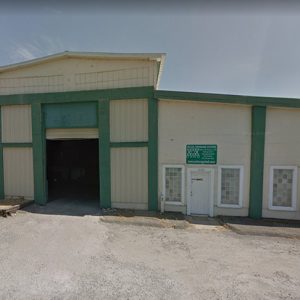 Command-Aire Building
Command-Aire Building  Command-Aire NC925E
Command-Aire NC925E 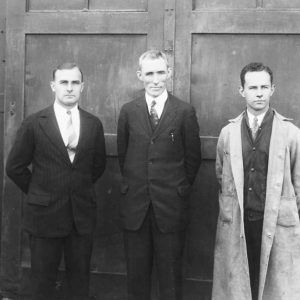 Command-Aire Personnel
Command-Aire Personnel 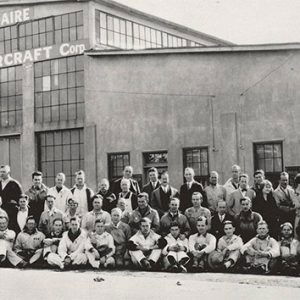 Command-Aire Staff
Command-Aire Staff 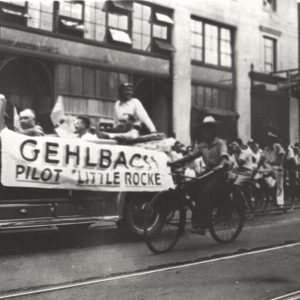 Gehlbach Parade
Gehlbach Parade 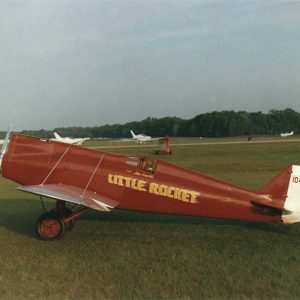 Little Rocket
Little Rocket 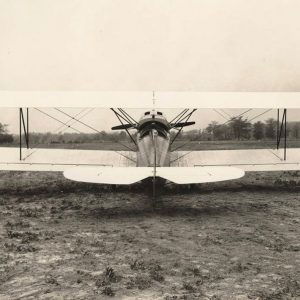 OX-5 Powered Plane
OX-5 Powered Plane  Plane Interior
Plane Interior 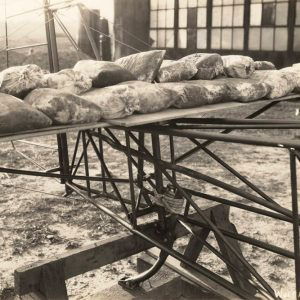 Stabilizer Test
Stabilizer Test 



I own the factory at 1823 East 17th in Little Rock, Arkansas. The future plan for the property is to turn it into a car and airplane museum. The property is on the national historic building list. It is mostly just as it was back when it was used to build the planes, thanks to the use of Arkansas Cypress better known as iron wood, impervious to rot and termites. It has survived the harsh weather conditions and storms for over 100 years.